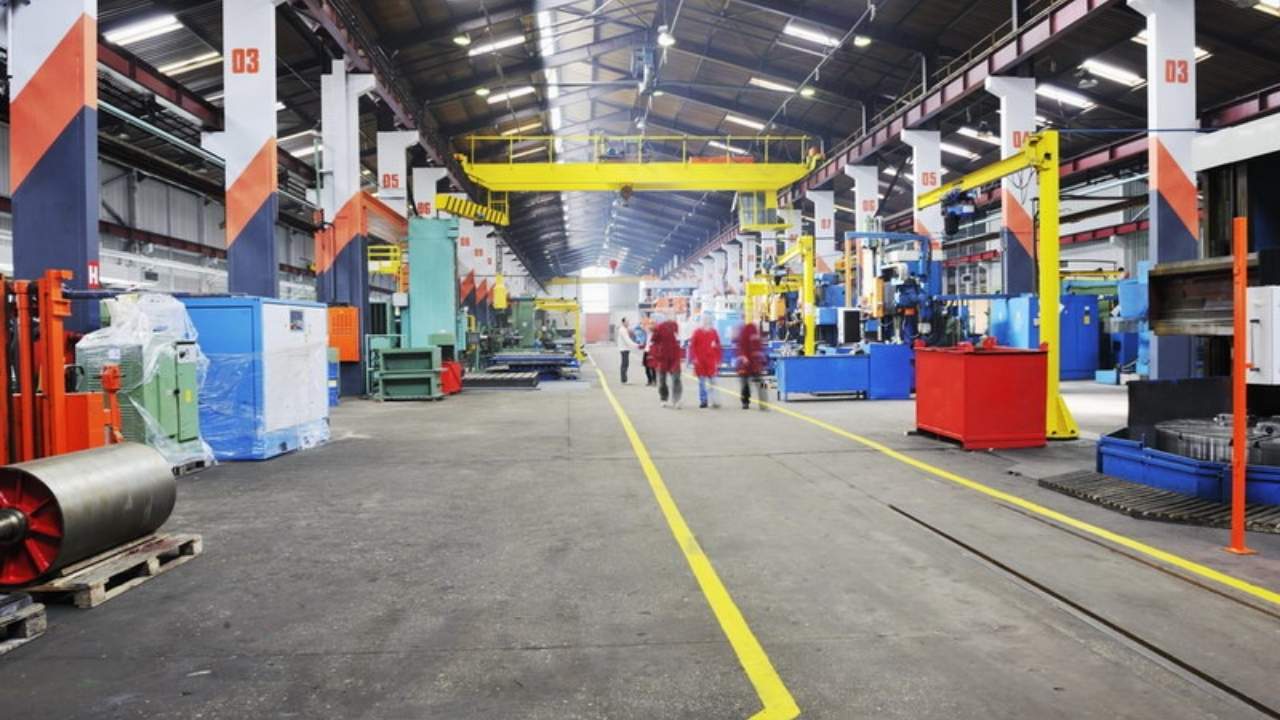Product Manufacturing and Industry 4.0
Product manufacturing has significantly changed thanks to the digitization of manufacturing. It is called Industry 4.0 to represent the fourth revolution in manufacturing. This revolution will enhance the adoption of computing and automation with smart autonomous systems.
Some of the possible applications range from identifying opportunities, optimizing supply chains, autonomous equipment, robots, 3D printing, Internet of Things(IoT), the Cloud, etc.
IoT and the cloud: A key component of Industry 4.0 is the IoT which consists of connected devices via the cloud. This helps in cost-effective internal operations with the help of the cloud environment where data is stored securely. Operations Management can easily be optimized by leveraging data insights at a price that is affordable for small businesses too.
Industry 4.0 is still evolving as we speak, smart companies who are adopting it realize its potential.
[widget id=”custom_html-34″]
America’s place in Global Manufacturing
Manufacturing is an essential component of US GDP and drove over 11 % of U.S. economic output and manufactured goods comprise close to half of U.S. exports.
Every dollar spent in manufacturing adds over $2.7 to the economy with related sectors like retail, transportation, and business services. Also, Manufacturing was expected to grow further in 2020 to the Institute for Supply Management but is expected to be hit badly by the COVID crisis.
The largest manufacturing sectors in the US by revenue are petroleum, steel, automobiles, aerospace, telecommunications, chemicals, electronics, food processing, consumer goods, lumber, and mining.
[widget id=”custom_html-40″]
The Global Soaps/Detergents Market
The global soap/detergents market is worth over $100 billion in 2019 and was expected to grow at a CAGR of over 7% and reach over $130 billion by 2023.
Manufacturing in this space has always needed to evolve with technology to stay effective and relevant. Constant waste elimination and innovation is required to keep healthy margins that suit both the manufacturer and customer. Customer preferences and sensitivities have to keep in mind in manufacturing in this segment.
Some new demands like anti-allergy soaps and natural ingredients containing detergents are now a norm. There is a compliance need to conform to certain regulations governing reducing the release of toxic chemical substances into the atmosphere during the manufacturing process of soaps and detergents like the US code of federal regulations (40 CFR). With increasing water scarcity worldwide, soap and other detergent manufacturers are working continuously on creating opportunities for water-efficient products.
Manufacturing of today has to deal with globally distributed supply chains in different geographies and must deal with suppliers and respond to customers across time zones, geographies, and currencies on a real-time basis. Each supplier or customer may have multiple sites to schedule incoming or outgoing parts/products with different supply chain and compliance needs.
The introduction of innovative products is also a key factor in the growth of this segment.
Bath soap is made from a combination of alkalis with vegetable/animal fat oil extractions.
There are pressures to reduce the impact of the soaps on sensitive skin and avoid using animal fat products
Even after meeting the challenges the key parameters for performance are related to quality, cost, delivery, and safety.
[widget id=”custom_html-33″]
The North American Bath Soap Market
The North American bath soap market was expected to grow at a CAGR of around 5% during the period 2019-2024.
Rapidly increasing demand for new product innovations is driving the bath soap market in the region.
New developments like easy availability everywhere, infusion of newer fragrances, attractive packaging, and tailored products based on preferences have boosted demand. The new developments have included eco-friendly products with natural ingredients, such as sea salt, along with biodegradable options. The demand for the product is expected to be fueled by the success of marketplaces-online/traditional, and product publicity in digital/traditional media which has created the need to be hygienic and smell good.
Product Manufacturing and ERP needs
Manufacturers need to move forward with real-time integration between their CRM, ERP, and other systems to be effective.
Integrating them gives quick and actionable insights to improve business performance.
Many ERP vendors built their systems purely for finance and accounting, warehouse and supply chain management, etc. While these are specialized domains, this can lead to portability of data nightmare between various standalone solutions that leads to wastage and duplication of time and effort. As small businesses need to effectively take on heavyweights today to survive, they need the capability of a comprehensive ERP that suits their needs. Some comprehensive options have begun to make their presence felt.
Furthermore, the basic requirement for a manufacturing ERP’s core modules are General Ledger, Accounts Payable, Accounts Receivable, Sales Orders, Purchase Orders, Inventory, Supply Chain Management, etc.
With the ERP solution, they should be able to decide what to make, when to make it, how to make it, what they need to buy to make, what resources they have in stock for the product, and what is the efficient way to make it, what is the best way to manage costs, and what is the return on investment(ROI) on the product/investments, etc.
Product Manufacturing ERP in the 21st century needs Enhanced Inventory Management to work. This includes advanced inventory management techniques; mobile technologies to reflect real-time availability including on the go; the use of bar-coding; anytime, anywhere access; data security, etc.
Businesses now know that customers prioritize experience over price, the actual value of the product over brand loyalty. If they slip up at a point with delays, inefficiencies and the issues-the customers will leave them for another.
Agile and responsive manufacturers that prioritize innovation and continuously delight the customer will be the ones to retain them.
Some experts feel that these cloud-based solutions are especially relevant in the 21st century as of now:
- Manufacturing Execution Systems (MES),
- Enterprise Resource Planning (ERP),
- Supply Chain Management (SCM),
- Sales & Operations Planning (S&OP),
- Customer Relationship Management (CRM).
Some ERP solutions are able to offer most or all of these capabilities in one cloud offering.
Day-to-day management is critical now and that you can’t manage what you don’t measure is self-evident.
Also, Manufacturing metrics range from production capacity, productivity, quality, delivery times, identifying waste, cost control, etc. They form the bedrock of business performance in this sector.
There is an urgent need to replace manual and paper-based processes with automated systems to monitor business processes in real-time. Additionally, the need for process speed and high product quality is critically important in this age of IoT, edge computing, smart manufacturing, and Industry 4.0.
How the Versa Cloud ERP worked for a soap and lotion manufacturer
One of our clients owns a soap and lotion manufacturing business.
The first accounting system they used in the late 1980s was Quicken. They upgraded to the original DOS-based version of QuickBooks, then the Windows-based QuickBooks Pro in 2005, and finally QuickBooks Enterprise in 2012.
During the time she assumed control of the business, she decided to stop using spreadsheets for inventory management though they were still used for operations/manufacturing management.
When the business moved to QuickBooks Enterprise, a need was felt to take the business online. A custom e-commerce site was built at a time when off-the-shelf e-commerce platforms like Shopify and Magento were unavailable. However, she found that a lot of work had to be done manually.
There were some key problems she faced:
- Purchase orders from the e-commerce site had to be manually entered into the QuickBooks system.
- Product names, numbers, details, and pricing had to be maintained both in the e-commerce system and in QuickBooks Enterprise.
- Manufacturing costs were not easily tracked as sometimes information was inconsistent, incomplete, and had to be collated manually.
With these problems seriously compromising business performance and growth, the need to look at a new business system was felt.
The requirements for the new system were defined as a first step:
- Eliminating as many manual processes and duplicate information silos as possible
- Make information available in real-time so that decisions could be made quickly.
- The custom e-commerce system needed to be integrated well with the new system so that orders, payment information, tracking details, and product information could flow back and forth seamlessly in a digital manner after syncing.
- It should have the possibility to have multiple e-commerce shops as well as integrations with services like eBay and Amazon.
- Accepting credit card payments as well as integration with the company’s banks via ACH was a must.
- The complete production process should be covered within the system, and spreadsheets had to be eliminated- fractional batches and lot tracking capability was essential as was FIFO inventory costing.
- The system should be able to track and recommend the exact lot size/quantity that needed to be manufactured.
- Tackling Fractional UoM in lots/batches was a key requirement with 6 digits of precision
Also required was the ability to segment and select all types of relevant data to gain competitive insights into her business.
[widget id=”custom_html-24″]
She evaluated various ERP options, but settled on Versa Cloud ERP due to the following reasons:
- Dimensional tagging capability in Versa Cloud ERP formerly VersAccount,s was a very powerful way to quickly get information after tagging it in a very high level of detail.
- Power Edition of the Versa Small Business Cloud ERP system with custom e-commerce, email, credit card gateway, and bank integration met critical needs.
- All Integrations were made digitally, and manual transfer and management of data were eliminated with no need for the use of spreadsheets.
- Powerful custom reporting was easily possible which provided real-time and actionable business insights to enhance performance effectively.
Here are some of the critical functionalities of our ERP system that helped her business:
- Versa System Overview: https://www.versaclouderp.com/blog/versa-system-overview/
- Versa Sales: https://www.versaclouderp.com/blog/versa-sales/
- Versa Purchasing: https://www.versaclouderp.com/blog/versa-purchasing/
- Inventory Management: Overview: https://support.versaclouderp.com/hc/en-us/articles/360022057373-Inventory-Management-Overview
- Building Products from BOMs: https://support.versaclouderp.com/hc/en-us/articles/360021859954-Building-Products-from-BOMs
- Purchasing and Receiving: https://support.versaclouderp.com/hc/en-us/articles/360038881213-Purchasing-and-Receiving
- Dimension Overview: https://support.versaclouderp.com/hc/en-us/articles/360042009173-Dimension-Overview
We’d love to help you transform your business and make it thrive with growth!
[widget id=”custom_html-19″]
[widget id=”custom_html-20″]
References:
https://www.thebalance.com/u-s-manufacturing-what-it-is-statistics-and-outlook-3305575
https://en.wikipedia.org/wiki/Manufacturing_in_the_United_States
https://finance.yahoo.com/news/global-soap-other-detergents-market-190000747.html
https://www.optiproerp.com/blog/what-is-manufacturing-erp/
https://www.themanufacturer.com/articles/dont-let-legacy-software-albatross-around-neck/
https://www.arcweb.com/blog/interest-erp-solutions-mid-market-firms-rise






